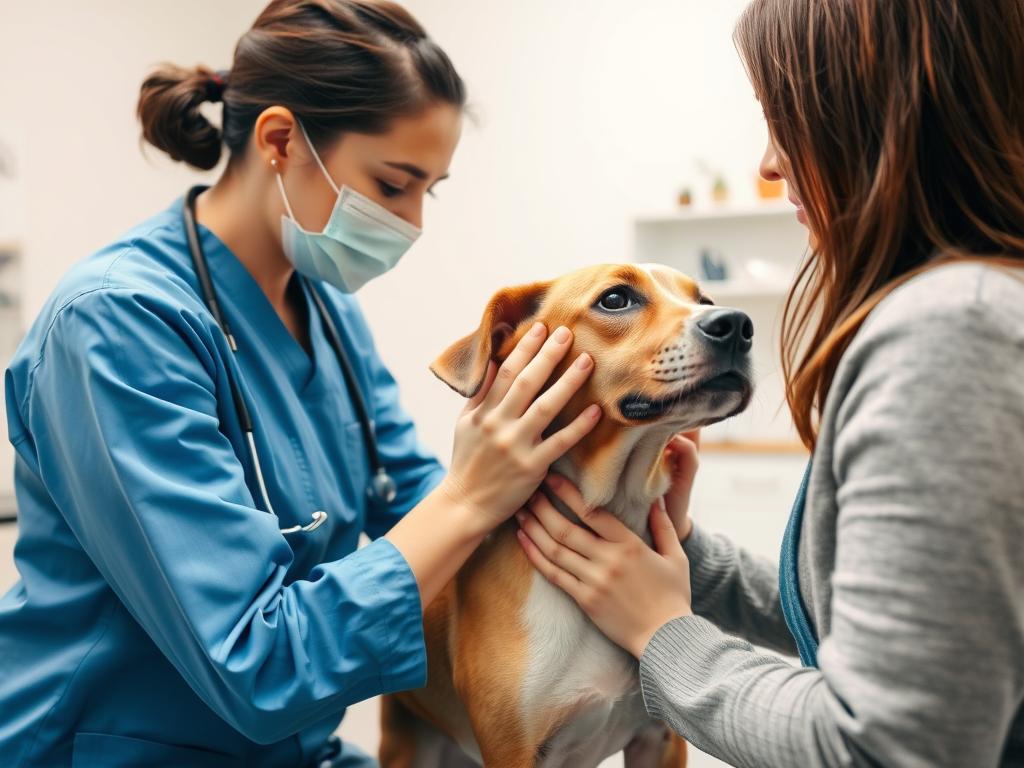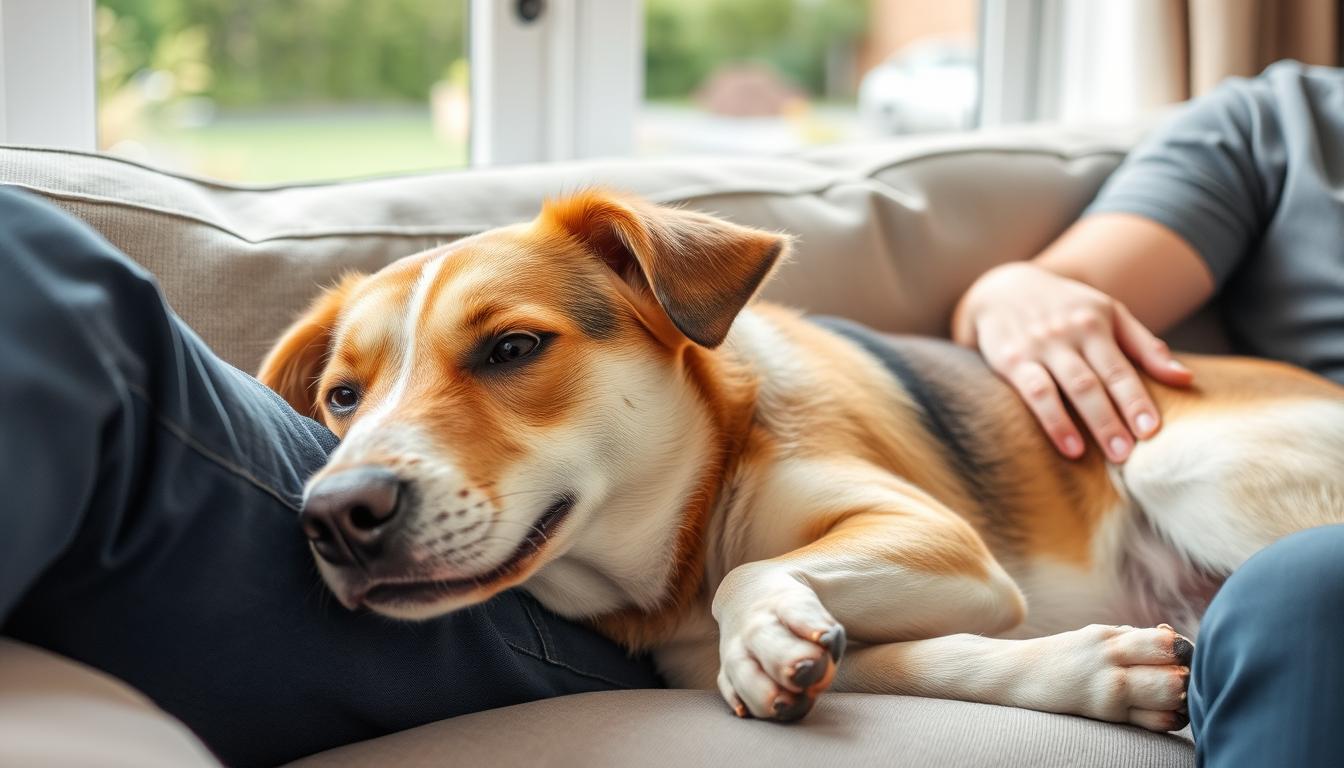Just like humans, dogs experience stress and anxiety, but they can't tell us how they're feeling. As a responsible pet parent, recognizing the signs your dog is stressed is crucial for their well-being. When you can identify these signals early, you can take steps to help your furry friend feel safe and comfortable again. Learning to read your dog's body language and behavior changes will strengthen your bond and improve their quality of life.
Why Recognizing Stress in Dogs Is Critical
Dogs communicate primarily through body language. When they're stressed, they send signals that are often subtle and easy to miss. Chronic stress can lead to behavioral problems, weakened immune systems, and even physical illness. By identifying stress early, you can address the underlying causes and prevent these issues from developing.
Understanding your dog's normal behavior is the first step in recognizing when something's wrong. A relaxed dog typically has a soft facial expression, neutral ear position, and loose body posture. When these patterns change, your dog might be trying to tell you something important.
10 Common Signs Your Dog Is Stressed
Learning to recognize these key indicators will help you identify when your dog is feeling anxious or uncomfortable. Remember that dogs may show multiple signs or just one or two, depending on their personality and the situation.
1. Excessive Panting or Yawning
While panting is normal after exercise or in warm weather, excessive panting when your dog is at rest or in a comfortable temperature can signal stress. Similarly, frequent yawning—especially when your dog isn't tired—is often a stress response. These stress yawns tend to be more intense and prolonged than regular sleepy yawns.
2. Pacing and Restlessness
A stressed dog often can't settle down. You might notice your dog walking back and forth, circling repeatedly, or being unable to get comfortable. This restless behavior is similar to how humans pace when worried or anxious. If your normally calm dog suddenly can't stay still, something might be bothering them.
3. Avoidance Behaviors
Dogs often try to remove themselves from stressful situations. This might include hiding under furniture, behind people, or in another room. Some dogs will turn their head away, avoid eye contact, or physically move away from a stress trigger. Respecting these signals is important—your dog is communicating that they need space.

4. Changes in Appetite or Bathroom Habits
Stress can significantly impact your dog's eating patterns and digestive system. A stressed dog might refuse meals, eat less than usual, or even develop stress diarrhea. Some dogs might also have accidents in the house despite being fully house-trained. These changes often occur because the nervous system affects digestive function during times of stress.
5. Destructive Chewing
When dogs feel anxious, they often turn to chewing as a coping mechanism. This might include destroying furniture, shoes, or other household items—especially when left alone. This behavior isn't your dog being "bad"—it's their way of releasing tension and anxiety. Separation anxiety is a common cause of destructive chewing.

6. Whale Eye (Showing the Whites of Eyes)
When you can see the whites of your dog's eyes (the sclera) in a crescent shape, often with the head turned slightly away but eyes looking at the stressor, this is called "whale eye." This expression indicates your dog is feeling uncomfortable or threatened. It's an important warning sign that should never be ignored, as it often precedes more defensive behaviors.
7. Tail Tucking
A dog's tail position communicates a lot about their emotional state. A tail tucked tightly between the legs signals fear or stress. Even subtle lowering of the tail from its normal position can indicate your dog is feeling uncomfortable. This body language is your dog's way of trying to appear smaller and less threatening when they feel vulnerable.
8. Excessive Shedding
Have you noticed your dog suddenly "blowing their coat" during a vet visit or in a new environment? This phenomenon, called stress shedding, happens when anxiety triggers hair follicles to release. You might notice an unusual amount of fur coming off your dog when they're in a stressful situation, even if it's not their regular shedding season.
9. Unusual Aggression or Growling
A normally friendly dog who suddenly growls, snaps, or shows other aggressive behaviors is often communicating extreme stress or fear. This isn't a sign of a "bad dog" but rather a dog who feels threatened and is trying to protect themselves. These behaviors typically emerge when more subtle stress signals have been missed or ignored.

10. Excessive Licking or Grooming
Dogs often engage in repetitive behaviors like licking their paws, excessive grooming, or licking surfaces like floors or furniture when stressed. This self-soothing behavior releases endorphins that help them cope with anxiety. If your dog is constantly licking or has developed raw spots from excessive grooming, stress might be the underlying cause.
Is Your Dog Showing These Signs?
If you've noticed several of these stress signals in your dog, especially if they're new or worsening, it's important to consult with your veterinarian. They can rule out medical causes and provide guidance specific to your dog's needs.
How to Help Your Stressed Dog
Once you've identified that your dog is experiencing stress, there are several effective strategies you can implement to help them feel more secure and relaxed. Remember that consistency is key when addressing anxiety in dogs.
Create a Safe Space
Every dog needs a quiet retreat where they can escape when feeling overwhelmed. Set up a comfortable area with your dog's bed, favorite toys, and items that smell familiar. This could be a crate with the door left open, a specific room, or even just a corner with their bed. Teach family members to respect this space as your dog's private area.
Establish Consistent Routines
Dogs thrive on predictability. Keeping consistent schedules for feeding, walks, play, and sleep helps your dog feel secure. When changes to routine are necessary, try to introduce them gradually. This stability gives your dog confidence and reduces anxiety about what might happen next.
Provide Regular Exercise
Physical activity is one of the best stress relievers for dogs. Regular walks, play sessions, and training not only burn energy but also release endorphins that improve mood. The type and amount of exercise should be appropriate for your dog's age, breed, and health status. Mental stimulation through puzzle toys and training is equally important.
Use Calming Techniques
Several methods can help soothe an anxious dog. Gentle massage, speaking in a soft voice, and slow, deep breathing near your dog can all help. Some dogs respond well to pressure therapy like thunder shirts or gentle wrapping. Background noise like classical music or white noise can also mask frightening sounds.
Consider Professional Help
For severe or persistent anxiety, don't hesitate to seek professional assistance. Veterinarians can rule out medical causes and might recommend behavior modification, training, or in some cases, anti-anxiety medications. Certified animal behaviorists can develop customized plans to address your dog's specific triggers and responses.
Practice Counterconditioning
This technique involves changing your dog's emotional response to stressful triggers. By pairing the trigger with something positive (like treats or play), your dog can gradually learn to associate the formerly stressful situation with good experiences instead. This process takes time and patience but can be very effective.
Frequently Asked Questions About Dog Stress
Can stress cause long-term health issues in dogs?
Yes, chronic stress can significantly impact your dog's health. Prolonged stress weakens the immune system, making dogs more susceptible to infections and illness. It can also lead to digestive problems, skin conditions, and even contribute to the development of certain diseases. Additionally, stress often manifests as behavioral issues that can damage the human-animal bond. This is why early intervention is so important—addressing stress promptly can prevent these long-term consequences.
How do I differentiate stress from normal tiredness?
The context and combination of behaviors are key to distinguishing between stress and normal tiredness. A tired dog will typically relax and sleep soundly when given the opportunity, while a stressed dog often remains vigilant and has trouble settling down. Tired dogs may pant after exercise but will return to normal breathing as they rest. Stress panting continues regardless of physical exertion or temperature. Additionally, tired dogs don't usually show other stress signals like whale eyes, tucked tails, or avoidance behaviors. If you're unsure, consider what's happening in your dog's environment that might trigger stress.
What should I do if my dog's stress signs worsen?
If your dog's stress symptoms are increasing in frequency or intensity, it's important to consult with a veterinarian promptly. Worsening stress can indicate an underlying medical condition or could develop into more serious behavioral issues. Your vet can rule out physical causes and may refer you to a certified animal behaviorist if needed. In the meantime, try to identify and minimize exposure to stress triggers, maintain a consistent routine, and provide a quiet, safe space for your dog. Never punish a dog for stress-related behaviors, as this will only increase their anxiety and potentially damage your relationship.

Understanding Your Dog's Stress Signals Is an Act of Love
Learning to recognize the signs your dog is stressed is one of the most important skills you can develop as a pet parent. By paying attention to these subtle and not-so-subtle signals, you're strengthening your bond and ensuring your dog feels safe, understood, and supported. Remember that each dog is unique—what stresses one dog might not affect another the same way.
With patience, consistency, and the right approach, most stress-related issues can be significantly improved. Your attentiveness to your dog's emotional needs today will contribute to a happier, healthier relationship for years to come.



